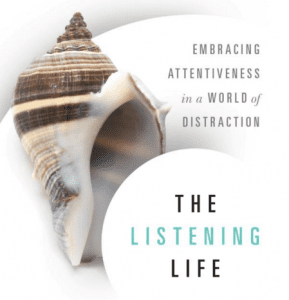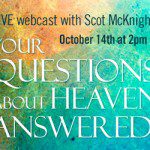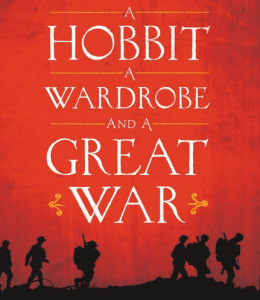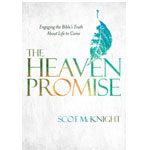 This review comes from our friend up in Grand Rapids, Ted Gossard.
This review comes from our friend up in Grand Rapids, Ted Gossard.
Walking in the Dust of Rabbi Jesus: How the Jewish Words of Jesus Can Change Your Life
During the past five decades coinciding with the discovery of the Dead Sea Scrolls there has been a renaissance of knowledge pertaining to the time of Jesus and a few centuries preceding him during the Second Temple period. What has come to light is just how Jewish the Christian faith is. We discover a mindset or perhaps more accurate, a way of life that is far more Jewish than the Greek ethos which came to engulf the church, and all but obscure the Jewishness of the faith.
The so-called New Perspective has helped us understand that arguably Greek philosophy influenced primarily by Plato and Aristotle were intrusions which not only do not always resonate with the Hebrew Bible, but actually at times contradict its worldview in significant ways. The New Testament with the story of Jesus purports to be the fulfillment of the Hebrew Bible/Old Testament story of Israel. The material world, contra Greek philosophy matters so much to the point that resurrection of all things material, the old into the new creation, is at the ending point of the story, fulfilled of course in Christ.
While this renaissance has come—not without its detractors to be sure, those who say the old is better, though even among them it is nearly universally acknowledged that there is some truth in it—there is a paucity, or lack of teaching from this perspective, although ground is being gained there.
Lois Tverberg, herself a scientist and former professor of science in a good Christian academic setting, Hope College, some years ago made the decision to pursue an entirely new career and venture, devoting herself to understanding particularly the time of Jesus, and Jesus’ teaching, indeed his entire life, in light of what she had discovered, that indeed the faith is steeped in and actually Jewish through and through.
She has written previously, but the first book of hers published by Zondervan was coauthored with Ann Spangler, Sitting at the Feet of Rabbi Jesus: How the Jewishness of Jesus Can Transform Your Faith. As you might well surmise by the title, that book takes a good look from different angles at Jesus himself. And specifically how Jesus was perceived and the ramifications for that. That perception was from Jesus’ own perception of himself and of his calling from God. That book is written the same way this book is, quite engaging, profound, clear, and compelling. What possibly struck me the most from it was just how the faith for the early followers of Jesus was just about that: following. Yes, following their Rabbi, indeed Master and Teacher, Jesus. Not just learning in their minds, but with their whole lives. It was about no less than an entirely new orientation, indeed new way of life. It certainly began by answering his call, sitting at his feet to learn from him, simply being with him. The way of the rabbi and the rabbi’s disciples. That book is not only well worth reading, but I highly recommend it. In fact it would be good to get both books and read them in the order written, though either way would be good.
Finally to begin to get to the book we are looking at now, Lois has written what is more than a sequel. It is a book that equals the first in significance as she takes us through most important themes in Jesus’ teaching, which are meant to change our lives from the ground up, no stones unturned. It has the feeling of reading the Gospels, especially the part of them that is so often, or at least has been so often neglected: about the life and teaching of Jesus before his crucifixion and resurrection. For whatever reason the life and teaching of Jesus has been largely neglected, all but ignored, and not considered even part of the good news, or the gospel. Which has amounted to a great loss, not at all in keeping with the evangelists Matthew, Mark, Luke and John, whom the church rightfully saw as proclaiming the gospel in their books: the gospel according to Matthew, etc.
Part I is “Hearing Our Rabbi’s Words with New Ears,” part II is “Living Out the Words of Rabbi Jesus,” and part III is “Studying the Word with Rabbi Jesus.”
In part I, “Hearing Our Rabbi’s Words with New Ears,” we are first challenged to be open to a new way of understanding, no less than the Jewish way, as opposed to the Greek way which came to largely dominate Christianity. This means that faith involves a complete commitment to follow Jesus as one walking in the dust of the rabbi, that is wanting to become more and more like one’s master and teacher—for us, Jesus. So that we walk as closely to him as possible by paying close attention to all he says and does. We learn for the Hebrew that contra Greek understanding, thought is inseparable from action. That what we hear from God is acted on, and done by us, or in the Hebrew understanding it is not heard at all. That the Shema (shema is the Hebrew word often translated “hear”) was to be recited daily as a commitment to the God who has entered into covenant with his people. We are to love God with all we are and have since he alone is God, to love our neighbor as ourselves, or as one who is like us. We find that Jesus’ words are often understood only in light of what they allude to from the Hebrew Bible/Old Testament.
In part II, “Living Out the Words of Rabbi Jesus” we are challenged to have a “good” eye, meaning we’re to be generous and not stingy. The Jewish emphasis and practice of giving rings through loud and clear, and with it, wisdom in good, sound, practical advice, which I think can helpfully complement the New Testament emphasis on the grace of giving. Next, the awe in which the Name of God is to be held and how in Jesus that Name brings salvation. Jewish wisdom for the tongue, so that we might do good rather than harm by what we say, as well as by what we refrain from saying. Not judging others by making every effort to put the best possible construction on another’s actions when possible–the Jewish way—as well as by remembering what Jesus adds to this: that we are all sinners, that what I see in someone else is often what I struggle with myself. And that God alone is the true and final Judge. Praying with nerve, or audacity (“chutzpah”) was along with the chapter on judging, a favorite part of this book for me (although I found every chapter important, so that I really hesitate to say I favored one over the other, but these two are probably over matters the Lord is especially wanting to see worked into my life right now). Like Abraham, we approach no less than God himself, and we don’t let go until he blesses others for whom we are praying. We learn to “think with both hands,” that is hold to all God has said and revealed, even when we can’t put them together ourselves. Not imaging we can explain or systematize all the truth God has revealed as the Greek influence has made us prone to do in Christianity. Learning as well to weigh laws as to importance and priority so that we can know how love and faithfulness to God will cause us to put one priority aside that we might always and by all means fulfill the law of love to others as we see done in scripture.
Part III, “Studying the Word with Rabbi Jesus,” begins with the importance of treasuring God’s word, scripture, so as to regularly study it with others over one’s lifetime, even in lively discussion and debate. Next we are to let God be God and not think we understand him and his ways, even while we reverently but persistently challenge him as one we have personal, intimate acquaintance with, even as Job did. And we find that the God of the Old Testament is like Jesus, a passionate father (not the impassable—no emotion—god of Aristotle, and Christian orthodoxy), so that the Old and New Testaments are about the same God. And God’s image is seen in no less than the humans God has made, all of them regardless of how they might appear to us. That we do well to learn to begin to see each human in the depth of who they are as well as their calling, in that way.
The chapters are not too long or short—I think just right, with endnotes for those who want to dig deeper. At the end of each of them are stimulating questions entitled, “Wisdom for the Walk.” And there is a glossary followed by recommended resources. Lois’ scientific training and mindset has helped her work through these issues critically. Yet she has shared the truth with us in a style reminiscent of scripture itself, with personal testimony and story, along with wisdom gathered from others.
This book can help us take more seriously the Hebrew Bible/Old Testament to the point that hopefully we will read and reread it (or listen to it, as I do) along with the New Testament, and begin to see Jesus and his teachings in light of it. I hear echoes of the Hebrew Bible/Old Testament in the quotes from Jewish rabbis, and find Jesus’ words both to parallel and carry them beyond to a fulfillment at least in how we’re to live as God’s people now.
The book hit me where I live. For example I was impressed with the importance of considering how love for God and for one’s neighbor, even for one’s enemy is to be evident in all I say and do. I was helped to see just how important it is to pay close attention to what Jesus said, which means to understand his words in their Jewish context, meaning they are words that are intensely relational with reference to God and to others, and involve our entire life.
This book uniquely helped me better understand the Jewish mindset, or way of life, and how Jesus fulfills that. Underscored is both the need for my own commitment within God’s commitment of covenant which takes in not only ourselves and God, but all others who are of this covenant community. A commitment that is lived out over time in this community. And that in this covenant in and through Jesus we are no less than taken up into God’s kingdom work together and for the world.
These words hopefully point well toward the richness of this book, because this review falls short of really conveying that richness which can only be appreciated by reading it, and pondering it, letting these life-changing truths sink in over time.
Thank you, Lois. And we can (and I do) look forward to the next book she authors, maybe about Jesus’ death and resurrection? Stay tuned. But in the meantime let’s avail ourselves of this book, as well as the previous one. A kind of reading that is life-changing in the way of Rabbi Jesus, as we hold on to his words, and learn more and more to walk in his way, the one who is the Way.










